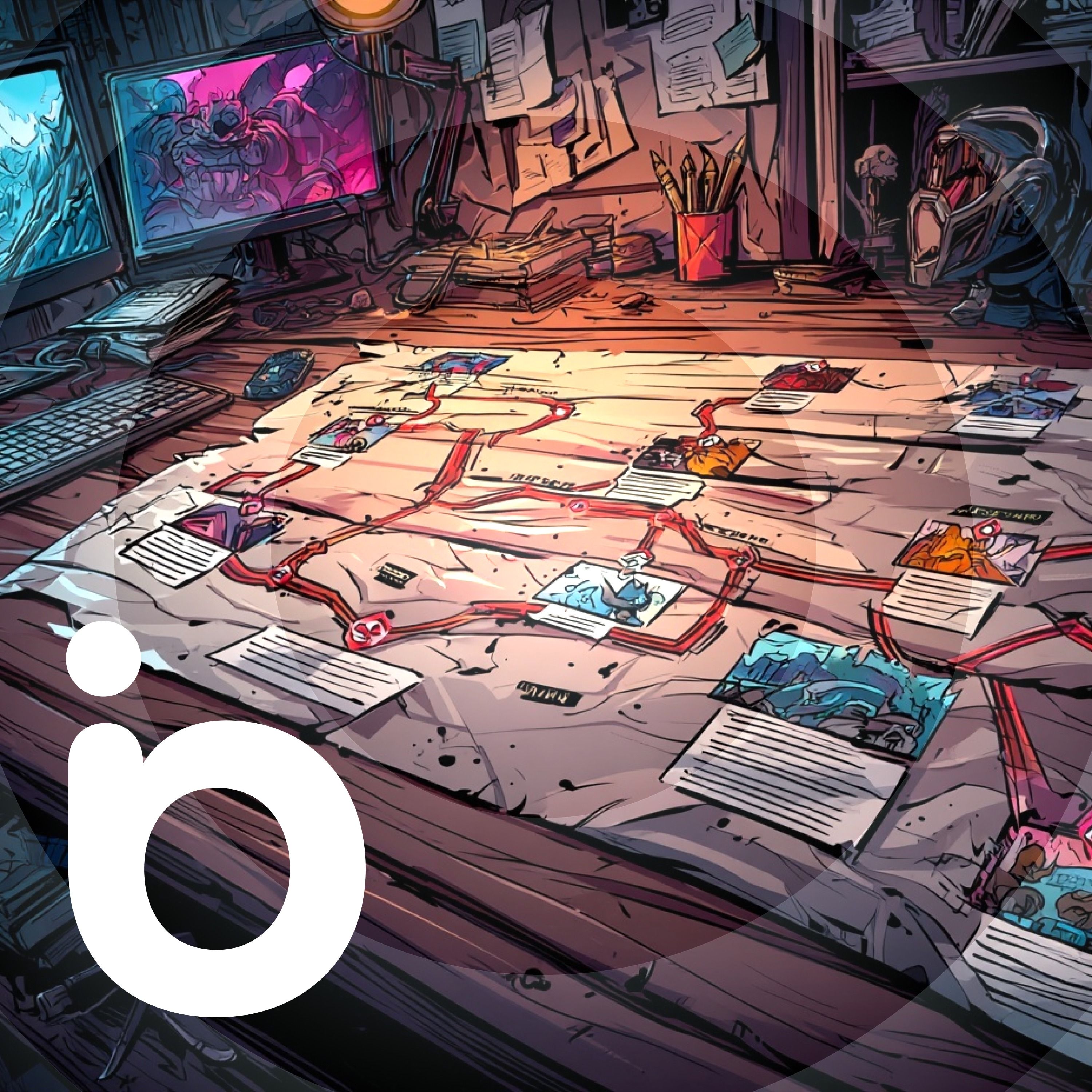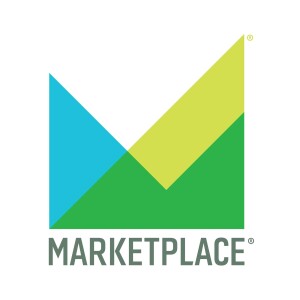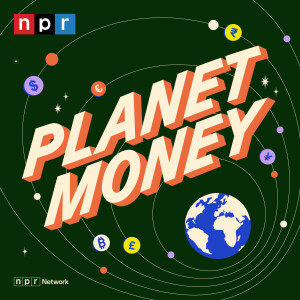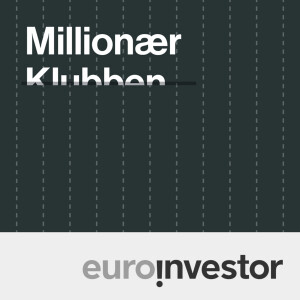

Boagworld: UX, Design Leadership, Marketing & Conversion Optimization
https://feeds.simplecast.com/XJ3MbVN3Episode List

Scaling UX in a Decentralized World: Inside Oxford
In this episode, we chat with Sarah Zama from the University of Oxford about how she's helping to influence UX across one of the most complex and decentralized organizations in the world.We explore how she built a UX center of excellence almost from scratch, how the team is transforming culture through coaching and community, and what it takes to push UX forward in a challenging environment. There's also a digression into Apple's questionable design choices, a fantastic app recommendation, and of course, Marcus' joke.App Of The WeekThis week’s app recommendation is Zuko Form Analytics. It’s an incredibly helpful tool for anyone involved in conversion rate optimization or form design.Zuko tracks detailed interactions with every field in a form—like how long someone spends in a field, where they drop off, and what fields trigger abandonment.You get session-level insights, and it all works via a simple JavaScript snippet. There's a free tier to get started (up to 1,000 sessions), and pricing starts around £40/month for 5,000 tracked sessions. It’s the kind of tool we wish we’d known about sooner.Topic Of The Week: Building UX Capability at Oxford UniversityWe were thrilled to be joined by Sarah Zama, UX Lead at the University of Oxford, to discuss a journey we’ve had the privilege of being part of: building a UX center of excellence in one of the most decentralized institutions in the world.Getting Started With Limited ResourcesPaul originally worked with a small team at Oxford to create the business case for a UX team, ultimately recommending a center of excellence model rather than a centralized tactical team.Why? Because hiring enough UXers to match developer headcount across such a massive organization was never going to be viable. Instead, a small, strategic team could focus on enabling others.Sarah took that vision and ran with it. She started with a written plan—not just a strategy that collects dust but a living, practical document with measurable outcomes. She quickly assembled a lean team, brought in an existing accessibility lead, and even secured a six-month secondee to help with projects and spread good UX practice further into the organization.A Consultative, Empowering ApproachThe Oxford UX team doesn’t do UX for people. Instead, they help others do UX better. Through consulting, coaching, training, and providing reusable assets (like a design system), the team makes itself useful across a broad landscape without getting dragged into execution.This consultative model includes:Workshops to support high-profile projectsGuest training sessions with external speakersCustom-built resources tailored to Oxford’s contextSupportive relationships with departments already doing good UXThey’ve also cleverly leveraged accessibility requirements as a wedge to introduce better UX thinking, combining compliance with best practices to gain traction.Growing a UX CulturePerhaps most impressively, Sarah and her team have focused on growing a UX culture through grassroots advocacy. They’ve built a UX Champions network that now includes over 150 people from across the university. This community shares knowledge, resources, and a passion for improving user experience, even when UX isn’t in their job title.It’s a smart way to scale. By empowering individuals and embedding UX thinking across departments, Sarah's team extends its reach far beyond what any centralized team could manage.The Frustrations and the WinsSarah admits the biggest challenge is visibility. Getting buy-in across such a large institution takes time and constant communication. There’s also the frustration that people still perceive UX as a cost or blocker rather than an enabler of success.But the wins are meaningful. A growing, skilled team. A network of passionate advocates. And projects where UX clearly moved the needle. Sarah credits much of the team’s progress to strong collaboration, openness to learning, and sheer persistence. It’s a long game, but one that’s already paying off.You can follow Sarah’s team and explore their resources at staff.admin.ox.ac.uk/ux. They welcome feedback, iteration, and anyone who wants to borrow from their growing UX playbook.Read Of The WeekThis episode’s recommended read is The Leadership Dilemma, an article Paul wrote for Smashing Magazine. It reflects on the exact challenges Oxford faced: how do you scale UX influence when your team is too small to do all the work? The article walks through a strategic approach to UX leadership that empowers others, shifts the organizational mindset, and creates lasting change.If you’re trying to build UX maturity in a large or slow-moving organization, this is worth your time.Question Of The WeekThis week’s question wasn’t submitted via email but came up naturally during the show: "What does a typical week look like for a small UX team in a large organization?"Sarah’s answer? There’s no such thing as a typical week. Her team works on everything from:Running UX trainingProviding design and accessibility consultationsParticipating in project meetingsDeveloping shared resources like design systemsThey also embed temporarily into project teams to upskill staff, run workshops, and seed best practices. Some team members even take secondments into other departments to help spread UX thinking more deeply.All of this reflects their consultative, empowering model. It’s not about building everything themselves but enabling others to build better.Marcus' JokeAnd finally, Marcus graced us with this gem:"When I was young, I thought rich people owned Bose music systems and the rest of us had Sony products. Turns out they were just stereotypes."We’ll let you groan in your own time.Thanks for reading, and we’ll be back soon with another episode! Find The Latest Show Notes

Scaling UX Impact with Limited Resources
Welcome back. In my previous emails, we explored how to plan and present your UX strategy and gain support from the people who matter. We talked about getting buy-in and navigating the occasional tricky political waters. It was all about setting the stage, wouldn't you say? But I'm also keenly aware that we didn't dive deep into what that strategy should actually contain. We just scratched the surface of how to sell it and discussed the big picture.Now, it's time to roll up our sleeves and talk about the nuts and bolts. We're going to get into the specific actions and approaches that will define your work as a UX leader. This is where your vision starts to become a tangible reality, shaping how your entire organization thinks about and delivers user experience.The Big Challenge: Too Much Work, Too Few HandsLet's address something we all feel in our bones: the elephant in the room. Most of us in UX, and I mean most, operate with teams that are just plain under-resourced. There's always more work to be done than there are people to do it. You look around, and for every UX professional, you often see multiple product owners, project managers, and developers. In my agency days, a 1:2 ratio of UX to developers was our ideal scenario, and it's why so many of us feel stretched thin.We want to make a difference, right? We want to ensure every digital touchpoint is delightful, efficient, and user-friendly. But if you're like me, you've probably felt that familiar tug of war: the desire to be involved in everything, versus the crushing reality of limited time and energy. Trying to be the "UX person" for every project just spreads you too thin. It often results in hurried, mediocre work, and that's not why we got into this field.I know what you're thinking. "More people! We need more budget, more headcount!" And believe me, I hear you. I've been there, banging that drum. But the truth is, until your organization truly understands and values UX, getting those extra resources is an uphill battle. It's a bit of a chicken and egg situation, isn't it? You need more resources to show value, but you need to show value to get more resources.So, how do we break this cycle? We can't keep trying to do all the UX ourselves. It's simply not scalable.A Powerful Shift: From Implementer to EnablerThis is where we introduce a fundamental shift in how you view your role and, crucially, how your colleagues view UX. We need to stop being the go-to team for simply "doing the UX work." We need to stop being the implementers who just take orders and churn out wireframes or conduct isolated tests.Instead, your primary role becomes that of a coach, an evangelist, and a guide. Your job is to instill a user-centric culture across the entire organization. It's about empowering and equipping your colleagues; the product owners, developers, marketers, and customer service teams – to do user experience work themselves.Think about it this way: there are far more of them than there are of you. If you can enable them to do even a small part of UX well, the collective impact on your overall user experience will be enormous. It's about leveraging the entire organization as a force multiplier for UX, rather than trying to handle everything with your small, dedicated team. This frees you up to be more strategic and to tackle the bigger, thornier UX challenges.This is the very heart of your UX strategy. It's a strategic move that shifts you from tactical execution to widespread influence. And it's precisely what we're going to explore over the next few weeks.The Three Pillars of Widespread UX ImpactTo achieve this widespread impact, there are four key areas we need to focus on. They are like the foundations of a solid house for your UX strategy.Offering Supportive Services: This is about providing guidance and assistance to your colleagues, helping them implement UX best practices in their own work. It's not about doing the work for them, but helping them do it.Providing Resources, Tools, and Information: We need to give our colleagues the right instruments and knowledge so they can create great experiences without always needing to come to us for every little thing.Setting Standards, Policies, and Standard Operating Procedures: This ensures that best practices are consistently applied across all projects, creating a baseline of quality even when you're not directly involved.Education and Training: This involves developing and delivering structured learning opportunities to help colleagues understand UX principles and apply them effectively in their daily work.Outies AsideIf you run an agency or work as a freelancer, you might be thinking, "This sounds great for in-house teams, but how does it apply to me?" Well, I'd argue it applies even more so.Too often, agencies and freelancers can fall into the trap of being seen as just "order takers" or "extra hands." Clients come to you, they tell you what they want built, and you build it. You might deliver a beautiful design or a perfectly functional website, but what if the client's brief was flawed from the start? What if they don't truly understand why they need certain UX elements, or how to maintain them after you've gone?Shifting to offering "supportive services" fundamentally changes that dynamic. Instead of just delivering solutions, you become a strategic partner who empowers your clients.Consider these ideas:Offer UX Audits and Strategic Roadmapping: Beyond building a single product, help clients understand their overall UX landscape and define a long-term strategy for their teams to follow.Provide UX Mentoring and Coaching: Offer your expertise to your client's internal teams. This could be monthly check-ins, ad-hoc consultations, or even helping them onboard a new in-house UX hire.Run Internal Workshops: Facilitate design sprints, user story mapping sessions, or basic usability testing workshops with your client's staff. You guide them through the process, helping them gain skills and ownership.Develop Design Systems or UX Playbooks: Instead of just designing screens, deliver a reusable design system or a "UX playbook" that empowers their developers and marketers to maintain consistency and user focus in future work.Focus on 'Enablement' Deliverables: Instead of just final designs, perhaps you deliver a comprehensive research plan they can adapt, or a framework for A/B testing that their marketing team can run.This approach transforms your relationship with clients. You move from being a vendor to an indispensable advisor. It builds deeper trust, often leads to longer-term retainer agreements, and ensures your work has a lasting impact beyond the immediate project. It's about helping your clients become more self-sufficient and more user-centric, which in turn makes your partnership more valuable.Looking Ahead: The Power of Supportive ServicesIn our next email, we'll dive deep into the concept of "supportive services" - a transformative approach that can help you expand your UX influence across the organization without increasing your team size. We'll explore how shifting from doing all the UX work yourself to enabling others can create a multiplier effect that dramatically increases your impact.This approach represents a fundamental shift in how UX professionals operate within organizations, and I'm excited to share specific strategies and examples with you next time. For now, though, let's wrap up with an action step.Take a moment to reflect on your current workload. Where do you feel most stretched thin? Which tasks seem to repeat themselves across different projects? Jot down a few notes - these insights will be valuable when we discuss supportive services in detail next time. As always, I'm keen to hear your thoughts, share them with me. Find The Latest Show Notes

The Future Of UX With Jared Spool
Joining me, Paul, are Marcus Lillington and Jared Spool, and together we explore how UX needs to reposition itself, what AI really means for designers, and how to navigate the current UX job landscape without losing hope. We also touch on some interesting new tools from Figma and an exciting AI-assisted prototyping app that could change how we work.App of the WeekThis episode highlights two key apps making waves in the design space:Figma SitesAnnounced recently at the Figma conference, this new tool aims to let you publish websites directly from Figma, competing with players like Webflow and Framer. However, we share a healthy dose of skepticism about its current capabilities—especially its accessibility issues and lack of data entry support, which limits its usefulness beyond very simple sites.ReaddyThis AI-powered assisted coding tool stands out as a promising alternative. Unlike traditional prototyping in Figma, Ready lets you describe your UI in natural language, and it generates real HTML and CSS code that’s responsive and supports data entry. This means you can create interactive prototypes faster, test them in real-world conditions, and iterate with ease. It’s not about replacing designers but augmenting their productivity, and it offers a glimpse into how AI can support design workflows in practical ways.The Future of UX, AI, and the Job MarketWe begin by reflecting on the state of UX and where it’s headed, especially with AI’s rapid development changing the landscape. Jared shares his ongoing work guiding UX professionals to unlock their full potential within organizations, emphasizing the gap between what UX can deliver and what’s often realized. This disconnect often results from a lack of awareness or understanding within teams, and Jared’s leadership sessions aim to close that gap.AI’s Impact on UX DesignWe delve into AI tools emerging in design, focusing particularly on generative AI and assisted coding. While AI is often hyped as a threat to designers, we agree it’s more of a productivity booster than a replacement. AI lets us do more with less effort, but it doesn’t eliminate the need for thoughtful, skilled UX design. The analogy Jared uses — comparing AI’s rise to previous tech shifts like blacksmiths transitioning to new materials — reminds us that professions evolve rather than vanish overnight.We discuss the limitations of current AI design tools, such as Figma Sites, which lack the sophistication needed for anything beyond very basic websites. On the other hand, Readdy offers a more practical approach by generating actual working code through conversational commands. It’s a step forward but still not a magic bullet. The process requires human input, iteration, and adjustment, which is where UX professionals continue to add value.An interesting angle comes from the critique of AI as reinventing the command line — a somewhat clunky, text-based interface for describing complex UIs. This makes it tricky to fully express the nuances of design and iterate quickly, especially in production environments where prototyping demands fast, precise changes.The UX Job Market RealityTurning to the job market, Jared offers a clear-eyed analysis: although there are more UX jobs available now than ever before, there are also far more UX professionals competing for them. The result? Overcrowded job listings and intense competition, especially for junior roles. The industry isn’t shrinking; rather, it’s saturated.He points out that the issue isn’t job scarcity but a mismatch between experience levels and job requirements. Many bootcamp graduates enter the market with limited experience, and companies often prefer hiring senior candidates to junior ones due to cost efficiency and immediate impact. For those struggling to find work, Jared advises gaining real-world experience by volunteering on meaningful projects with tangible outcomes, like improving a local charity’s website to boost adoption rates.For senior professionals, the key is precision: tailoring applications meticulously to each job posting and clearly demonstrating how your skills match the role. Generic resumes won’t cut it when hiring managers sift through hundreds of applicants. This targeted approach greatly improves the chances of landing interviews and offers.Looking Ahead: Will AI Replace UX?We debate an intriguing prediction by Jakob Nielsen that many UX battles are “won” and that AI might replace human interaction with websites entirely, as AI agents fetch and personalize content for users. While fascinating, we question the commercial and practical realities. Advertisers still rely on website visits for revenue, and user experience involves more than information retrieval; it’s about connection, context, and trust.We emphasize the enduring importance of educating organizations about real UX issues, including accessibility and ethical design topics that remain under appreciated despite technological advances.Final ThoughtsThe conversation wraps on an optimistic note: despite challenges, UX as a profession is robust, filled with opportunity, and evolving with new tools and methods. The future may be uncertain, but it’s far from bleak. Embracing AI as an aid, not a threat, and focusing on building relevant experience and clear communication skills will serve UX professionals well.Marcus JokeTo lighten the mood, Marcus closes with a classic:“I went to a zoo and saw a baguette in a cage. Apparently, it was bred in captivity.”Thanks for tuning in to this week’s episode. Whether you’re grappling with AI’s role in design or navigating a tough job market, we hope this conversation gives you clarity and confidence to move forward. See you next time! Find The Latest Show Notes

Creating Personality-Driven Design Experiences
Creating Personality-Driven Design ExperiencesIn this week’s episode of the Boagworld Show, we’re joined by none other than Andy “The Pioneer” Clarke. We dig deep into the role of aesthetics in UX, explore how AI can conduct user interviews, and debate how to approach pricing conversations with clients. Alongside our usual banter, you’ll find insights into why design needs personality and how creative direction can add real value, whether you’re designing marketing sites or B2B dashboards.We also introduce a new AI-powered user research tool, share some standout reading recommendations, and end with the usual Marcus groaner (you’ve been warned).App of the Week: WhyserThis week we took a look at Whyser, an AI tool designed to conduct user interviews on your behalf. You simply set up your interview goals and questions, and the AI takes care of the rest; scheduling, conducting, and even analyzing interviews.What impressed us most was how well the AI adapted its questions based on our answers. It felt remarkably natural and even asked follow-up questions relevant to what we’d said earlier. That’s a big deal for those of us who struggle to find time to do interviews at scale.Whyser isn’t without its drawbacks; it does put a layer between you and your users, which can dilute the empathy you build through real human conversation. But if time or access is limited, this could be a game changer. Especially helpful for teams that rarely get to talk to users directly.Topic of the Week: Why Aesthetics Still Matter in UXWe hear it all the time: “Design is about solving problems.” That’s true, but it’s not the whole picture. In this episode, we explore the undervalued role of aesthetics in UX and why visual design, art direction, and brand personality still matter.From Usable to MemorableWe kicked off with a discussion about how too many websites today feel like “colored-in wireframes.” They’re functional but lack soul. The shift toward product-thinking has stripped personality from digital experiences. As Andy put it, “Everything looks like Bootstrap.”Yet, personality plays a critical role in how users connect with your brand. Whether it’s a SaaS dashboard or a marketing homepage, how a product feels impacts engagement, trust, and even long-term retention. People stick around when something makes them feel something—even if they can’t quite explain why.The Cognitive Load LinkThere’s a practical side to aesthetics too. Good design improves usability not just through layout but also by boosting mood. A more pleasant experience reduces cognitive load, making interfaces feel easier to use.That means aesthetics aren’t just about making things pretty; they’re a lever for user performance and satisfaction. It’s not fluff; it’s function wrapped in emotion.Art Direction in Unlikely PlacesAndy gave a great example from his time working on a cybersecurity app. Hardly a glamorous field, yet he found space to inject moments of brand personality through microinteractions, onboarding flows, and visual consistency. Even in utilitarian tools, design can reflect a brand’s values and improve the user experience.As he put it: “You don’t need to delight, but you do need to differentiate.”Reframing CreativityThe problem, we all agreed, starts in education. Many young designers are trained to focus on flows, not feelings. They're brilliant at getting users from A to B but haven’t been taught how to make that journey enjoyable or memorable.Andy argued that curiosity is the missing ingredient. Design isn’t just about function, it’s about communication. And communication thrives on references, storytelling, and creativity. He showed us how keeping a library of visual influences, whether it’s old magazine layouts, album covers, or supermarket packaging, can help inject new life into projects.Selling the Value of Aesthetic ThinkingWebsites are easy to build these days. What clients are really paying for is the ability to tell their story well. That’s where we, as designers, add value.Andy’s take? Spend 95% of your budget on creativity and 5% on implementation. Tools like Squarespace can handle the build, what matters is how it looks, feels, and communicates. That’s where your edge lies.And when clients say, “But we already have a brand,” the job becomes about interpreting that brand, stretching it into a full visual language, not just slapping a logo onto a template.So if you’ve felt the creative spark dimming lately, maybe it’s time to step away from your Figma files and pick up an old design annual, flick through a vintage magazine, or just take a walk with curiosity as your guide.Read of the WeekThis week we didn’t highlight specific articles, so no recommended reading to share. That said, the conversation itself was rich with references; from Blue Note album covers to 'Smash Hits' magazine layouts—and might inspire you to go digging through your own design bookshelf.Listener Question of the WeekWe didn’t have a listener question either, but the discussion turned to one that’s always on designers’ minds: How do I handle client feedback without compromising the design?Andy’s advice was simple but brilliant: only give clients choices over things they can’t mess up. Stakeholders will always want to contribute; so let them. But steer them toward harmless decisions. Let them choose between two acceptable color variations or headline treatments, but don’t give them free rein over critical layout or concept work unless you're okay with every option on the table.Another smart tip: give clients creative choices using metaphors. Instead of asking “Do you want this to feel formal or informal?” ask “If your brand were a movie or celebrity, who would it be?” It’s a great way to pull out emotional nuance without falling into clichés like “trustworthy” and “professional” (which, let’s face it, everyone says).And finally, validate your design decisions with user testing. Don’t let testing dictate the design, but do use it to confirm you’re on the right track. That way, you move from subjective opinions to informed decisions and you keep the project moving forward.Marcus's JokeAnd to close the show, here’s Marcus’s joke (we apologize in advance):Scientists have found that cows produce more milk when the farmer talks to them.Apparently, it’s a case of in one ear and out the udder.We’ll leave you to groan in peace.Thanks for listening, or reading, if you’re one of our show notes faithful. If you enjoyed Andy’s insights, be sure to check out his work over at Stuff & Nonsense. Until next time! Find The Latest Show Notes

The Job Title Train Wreck
This week, we catch up on Paul’s latest adventures—from a memorable dinner with Todd “the accessibility guru” where we talked WCAG 3, to a deep dive into the shifting landscape of design job titles. We’ll share an app that brings real form fields into your Figma prototypes, unpack why “product designer” is suddenly on everyone’s profile, and wrap up with a classic Marcus joke to send you on your way.App of the WeekWe’ve been wrestling with Figma’s built‑in prototyping limitations—particularly the lack of real form fields—and this week we discovered Bolt. Bolt lets you import a Figma frame URL and instantly spin up an interactive prototype complete with working inputs and text fields. That means you can run realistic usability tests without hand‑coding forms or cobbling together workarounds.Topic of the Week: Bringing Clarity to the Chaos of Design Job TitlesIn an era when “UX designer,” “UI designer,” “product designer,” and “service designer” all coexist, you might feel like you need an advanced diploma just to understand your own role. We certainly do. Let’s unpack what each title really implies, why the trend toward “product design” worries us, and how you can bring crystal‑clear definitions into your next job posting or team conversation.Why Job Titles MatterEven if you’re happy wearing multiple hats, inconsistent naming can cause real headaches:Employer confusion: Hiring managers may post for a “product designer” but expect the traditional UX responsibilities you’ve mastered.Scope creep: Without clear boundaries, you’ll end up doing support tickets one week and sales decks the next—often without the title or compensation to match.Perception gaps: Outside the design bubble, “designer” still conjures images of pretty pictures, not strategic problem‑solvers.Getting titles straight not only sets expectations for you, it helps stakeholders understand the value you bring.The Rise of Product DesignLately, many companies are retiring “UX designer” in favor of “product designer.” On the surface, this feels like career progression: a broader focus that spans UI, analytics, and even marketing. Yet we see two risks here:Internal focus: “Product designer” can imply you’re optimizing existing features and metrics, rather than uncovering latent user needs.Ambiguous boundaries: When design expands outward, it often steps on the toes of customer success, support, and even engineering roles.If your title leans toward “product,” make sure you and your team agree on whether that includes user research, email flows, or post‑launch monitoring.Breaking Down the RolesHere’s how we interpret the four most common titles—and how they overlap:UI DesignerUI designers focus on the look and feel of your screens. Their goal is to reduce friction and make interactions intuitive. Think pixel perfection, animation timing, and responsive layouts. They might not set research objectives, but they’ll ensure that every button state feels just right.UX DesignerUX designers own the end‑to‑end experience. From SEO‑driven landing pages to post‑purchase emails, they obsess over every touchpoint. If you care about conversion funnels, user flows, or cross‑channel consistency, you’re in the UX camp.Product DesignerProduct designers straddle the middle: they build interfaces and track success metrics, but they’re also tasked with aligning features to business goals. In healthy organizations, they champion user advocacy and roadmap prioritization, but that balance can tip too far toward internal KPIs.Service DesignerService designers operate backstage. They optimize the processes and systems—think support scripts, training materials, or fulfillment pipelines—that empower on‑stage teams to deliver seamless experiences. Their scoreboard? Operational efficiency and scalability.How to Bring Clarity to Your TeamLabels alone won’t solve confusion. Here’s how we recommend making roles crystal clear:Define scopes explicitlyIn every job description or team charter, list the deliverables you own—and those you don’t. For example, “Responsible for wireframes and prototypes, not email automation.”Align on success metricsAgree on the KPIs or user outcomes tied to each role. If you’re a UX designer, maybe it’s task completion rates; if you’re a service designer, it might be first‑response times.Foster cross‑role collaborationSchedule regular syncs between UI, UX, product, and service designers so everyone sees the handoffs and dependencies. That shared visibility prevents silos.Revisit titles periodicallyAs your organization evolves, carve out time every six months to discuss whether roles—and their titles—still reflect who does what.By naming responsibilities clearly and encouraging open dialogue, you’ll reduce friction, align expectations, and help everyone—from junior hires to C‑suite—understand what “designer” really means in your organization.Resources of the WeekHere are two go‑to resources for leveling up your UX practice:Leaders of AwesomenessA free community and weekly webinar series led by Jared Paul that challenges conventional UX metrics and dives into real‑world best practices.Baymard InstituteAn extensive repository of user‑research reports covering ecommerce, web forms, mobile patterns, and more—now searchable via AI to surface exactly the studies you need.Marcus Joke“I never wanted to believe my dad was stealing from his job as a road worker. But when I got home, all the signs were there.” Find The Latest Show Notes
Create Your Podcast In Minutes
- Full-featured podcast site
- Unlimited storage and bandwidth
- Comprehensive podcast stats
- Distribute to Apple Podcasts, Spotify, and more
- Make money with your podcast












